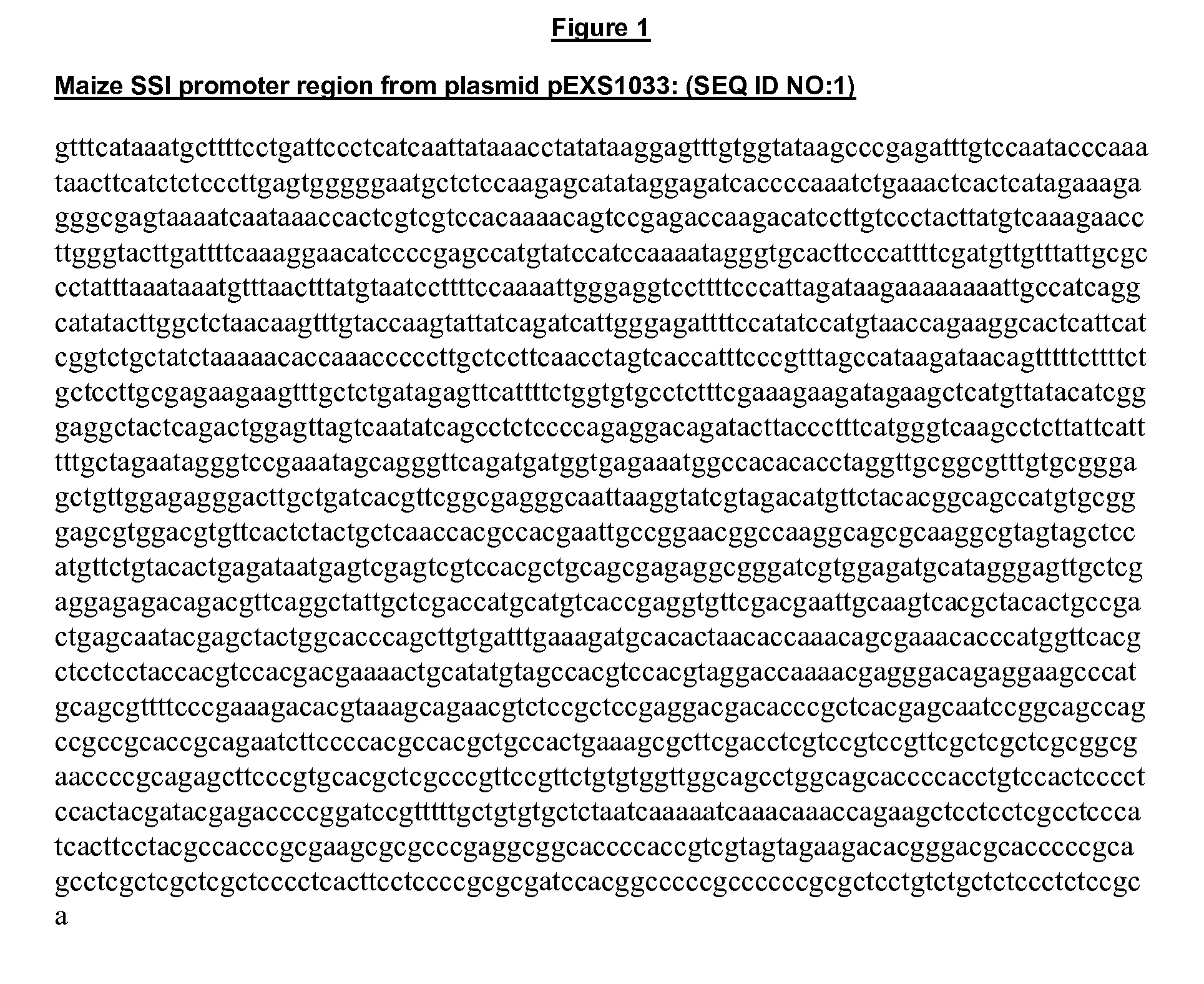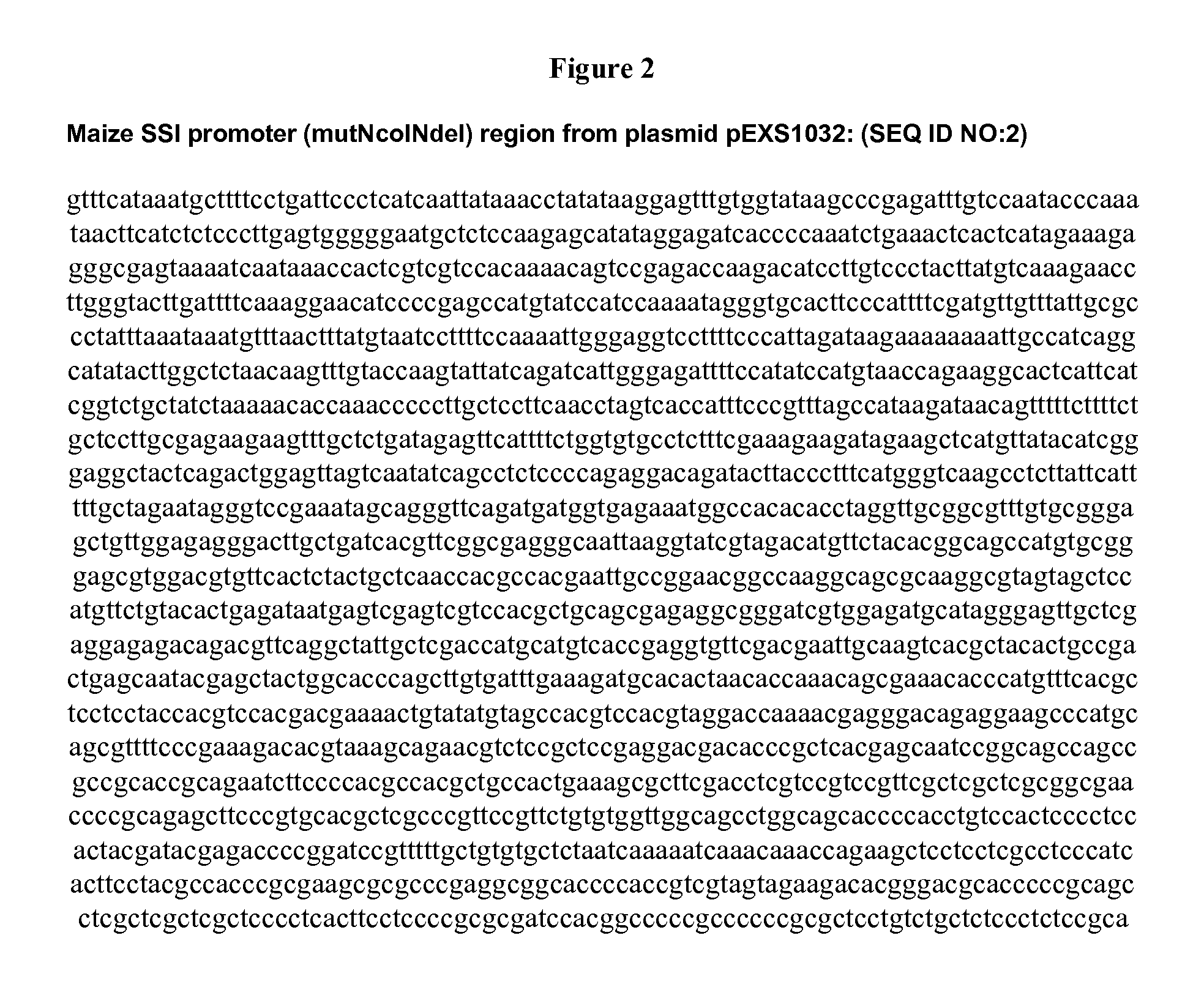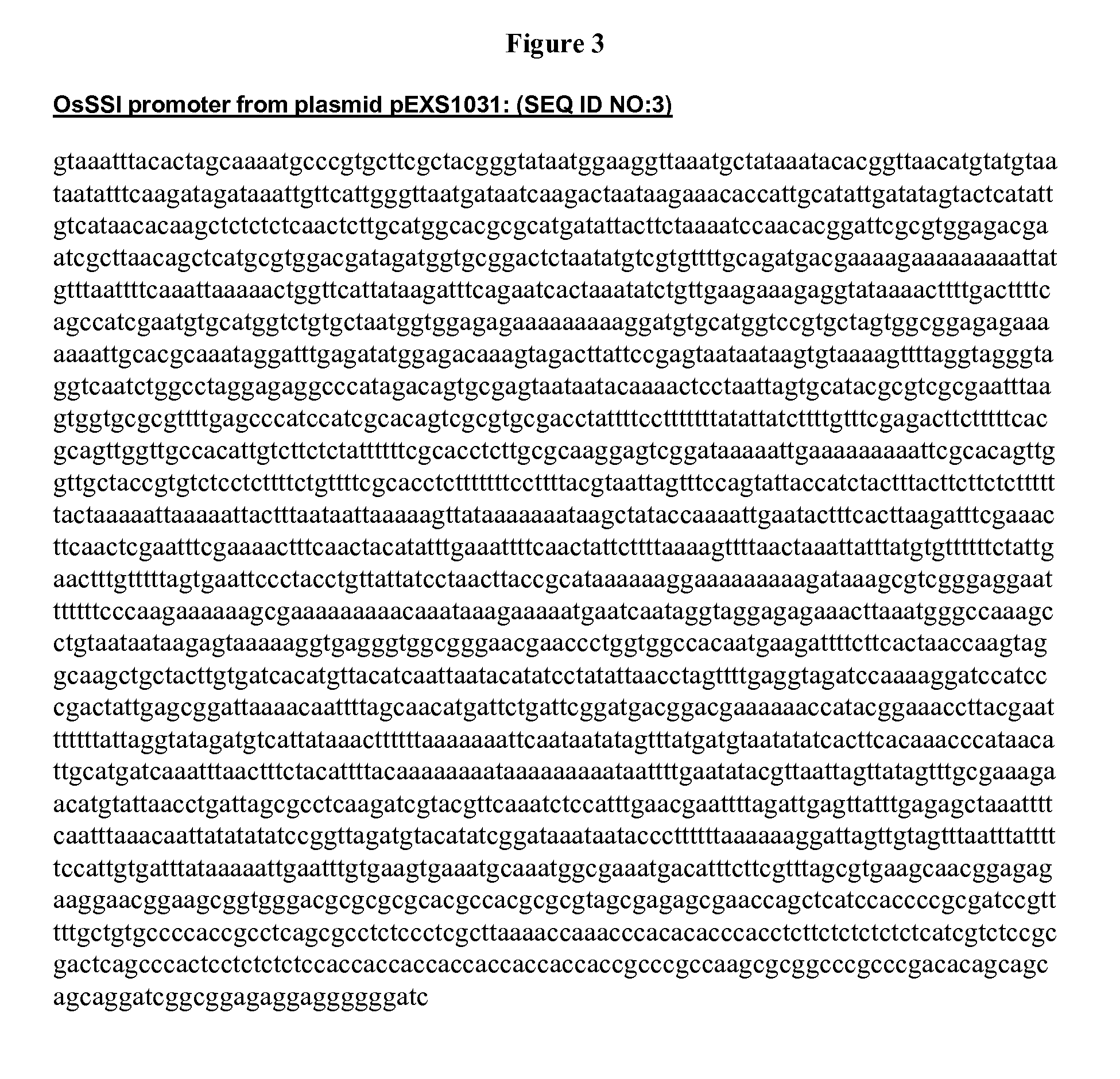Polynucleotides for regulation of high level tissue-preferred expression in crop plants
a technology of tissue-preferred expression and polynucleotides, which is applied in the field of agricultural biotechnology, can solve the problems of insufficient light, insufficient or insufficient available water, and inability to regulate the expression of tissue-preferred genes in crop plants, so as to improve stress tolerance, increase yield, and improve nutritional quality
- Summary
- Abstract
- Description
- Claims
- Application Information
AI Technical Summary
Benefits of technology
Problems solved by technology
Method used
Image
Examples
example 1
Cloning of Maize Starch Synthase I Promoter and Rice Starch Synthase I Promoters and Terminators
[0178]The Zea mays Starch Synthase I cDNA (Knight et. al., The Plant Journal 1998) was used to perform a BLAST search against version 3 of the partially assembled Maize genome database maintained by The Institute for Genomic Research (Rockville, Md.). TIGR sequence AZM3—58750 contains 1114 base pairs upstream of the start codon of the Starch Synthase I (SSI) cDNA (Genbank accession #AF036891). Primers were synthesized based on this sequence to amplify the unknown region further upstream. Polynucleotides from the tertiary round of thermal asymmetric interlaced PCR (TAIL PCR) (Liu et al., Plant J 1995 September; 8(3):457-463) using the primer pair EXS653 and EXS889 and genomic DNA from Maize line W64A were subsequently cloned and sequenced. A new primer pair, EXS890 and EXS918, were used to amplify and clone the proximal promoter region, including the 5′ UTR, resulting in a polynucleotide o...
example 2
Vector Construction
[0181]Constructs were made using either the rice or maize SSI promoter plus GUS with either the Nos terminator (An G. at al., The Plant Cell 3:225-233, 1990) or rice SSI terminators (t-OSSSI) (Table 4).
TABLE 4GUS chimeric constructsBinaryComposition of the expression cassettevector(promoter::reporter gene::terminator)EXS1031Rice SSI promoter::GUS::Nos terminatorEXS1032Maize SSI (mutNcolNdel) promoter::GUS::Nos terminatorEXS1033Maize SSI promoter::GUS::Nos terminatorRLM661Rice SSI promoter::GUS::t-OSSSI-3 terminatorRLM62Rice SSI promoter::GUS::t-OSSSI-5 terminator
example 3
Maize Transformation
[0182]Agrobacterium cells harboring a plasmid containing the gene of interest and the maize AHAS gene were grown in YP medium supplemented with appropriate antibiotics for 1-2 days. Two loops of Agrobacterium cells were collected and suspended in 2 ml M-LS-002 medium (LS-inf. The cultures were incubated with shaking at 1,200 rpm for 5 min-3 hrs. Corncobs [genotype J553] were harvested at 8-11 days after pollination. The cobs were sterilized in 20% Clorox solution for 5 min, followed by spraying with 70% Ethanol and then thoroughly rinsing with sterile water. Immature embryos 0.8-2.0 mm in size were dissected into the tube containing Agrobacterium cells in LS-inf solution.
[0183]Agrobacterium infection of the embryos was carried out by inverting the tube several times. The mixture was poured onto a filter paper disk on the surface of a plate containing co-cultivation medium (M-LS-011). The liquid agro-solution was removed and the embryos were checked under a micros...
PUM
| Property | Measurement | Unit |
|---|---|---|
| resistance | aaaaa | aaaaa |
| nucleic acid | aaaaa | aaaaa |
| stress tolerance | aaaaa | aaaaa |
Abstract
Description
Claims
Application Information
 Login to View More
Login to View More - R&D
- Intellectual Property
- Life Sciences
- Materials
- Tech Scout
- Unparalleled Data Quality
- Higher Quality Content
- 60% Fewer Hallucinations
Browse by: Latest US Patents, China's latest patents, Technical Efficacy Thesaurus, Application Domain, Technology Topic, Popular Technical Reports.
© 2025 PatSnap. All rights reserved.Legal|Privacy policy|Modern Slavery Act Transparency Statement|Sitemap|About US| Contact US: help@patsnap.com



